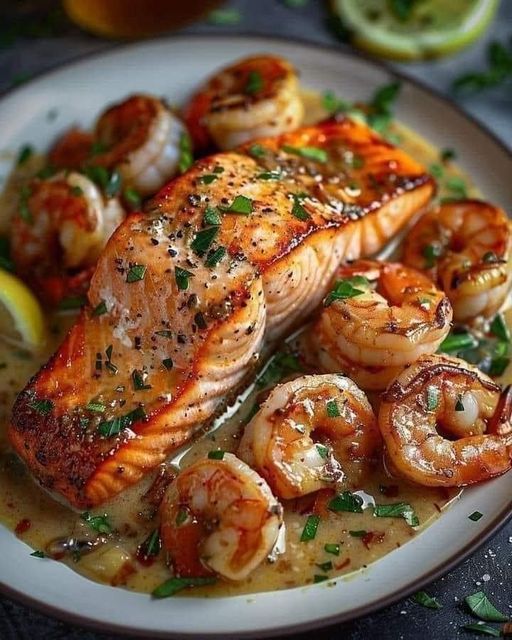
Cajun cuisine, renowned for its robust flavors and storied history, has captivated food enthusiasts worldwide. Originating from the French-speaking Acadian people who settled in Louisiana, this culinary tradition is celebrated for its intricate use of aromatic spices and hearty ingredients. The essence of Cajun cooking lies in its ability to transform simple, accessible components into extraordinary, flavorful dishes. This blog post aims to take you on a delightful journey through the exquisite combination of salmon and shrimp, elevated by the tantalizing flavors of Cajun seasoning.
At the heart of Cajun cuisine is a unique blend of spices that includes paprika, garlic powder, onion powder, cayenne pepper, and thyme, among others. These spices not only add depth and complexity to dishes but also reflect the rich cultural tapestry of Louisiana. The use of fresh, local ingredients is another hallmark of this culinary tradition, with seafood playing a pivotal role. Cajun salmon and shrimp, in particular, have become signature dishes that showcase the harmonious interplay of these spices with the natural flavors of the seafood.
The cultural significance of Cajun salmon and shrimp extends beyond their taste. These dishes embody the spirit of the Cajun people, who have a history of resilience and adaptability. Their ability to create delicious, hearty meals from the resources available to them has been passed down through generations, making Cajun cuisine a living testament to their heritage. This tradition of culinary ingenuity continues to thrive, making Cajun salmon and shrimp a beloved choice among seafood lovers.
Preparing the Perfect Cajun Salmon and Shrimp
The key to a successful Cajun Salmon and Shrimp dish lies in meticulous preparation. Start by preheating your oven to 450 degrees Fahrenheit, ensuring it’s ready for the final step of cooking. This high temperature is crucial for achieving that desired crispiness on the exterior while maintaining moist, tender interiors.
Seasoning plays a pivotal role in crafting a dish brimming with robust flavors. Begin by generously coating the salmon with Cajun seasoning. This blend typically consists of paprika, garlic powder, onion powder, cayenne pepper, oregano, and thyme, creating a symphony of spicy, smoky, and savory notes. Massage the seasoning into the salmon to ensure it penetrates deeply, maximizing flavor with each bite.
Next, focus on the shrimp. Similar to the salmon, the shrimp should be lavished with Cajun spices. Toss the shrimp thoroughly in the seasoning mix, making sure each piece is evenly coated. This process ensures that the shrimp will complement the salmon perfectly, providing a cohesive flavor profile throughout the dish.
Achieving the perfect sear is another critical step. Heat a skillet over medium-high heat and add a small amount of oil. Once the oil is shimmering, place the salmon skin-side down in the skillet. Searing the salmon skin-side first helps to lock in the juices, preventing the fish from drying out. Allow the salmon to cook undisturbed for about 3-4 minutes, or until the skin is crispy and golden brown. Flip the salmon and sear the other side for an additional 2-3 minutes.
For the shrimp, a quick sear in the same skillet works wonders. Cook the shrimp for about 1-2 minutes on each side, or until they turn a beautiful pink and are opaque throughout. Be mindful not to overcook the shrimp, as they can become rubbery if left on the heat for too long.
Cooking Techniques
Mastering the art of cooking cajun salmon and shrimp involves not only understanding the intricate balance of flavors but also perfecting the techniques that ensure an ideal texture. Cooking seafood to perfection requires keen attention to detail and precise timing.
To begin with, after seasoning the salmon with your preferred blend of Cajun spices, heat a skillet over medium-high heat until it’s hot. This initial high temperature is crucial as it sears the salmon, locking in its moisture and creating a delightful crust. Place the salmon skin-side down in the skillet and sear for about 2 to 3 minutes. Then, gently flip the salmon and sear the other side for an additional 2 minutes.

